Former Secret Service Agent Makes Startling Claim About Bullet Found After Kennedy Assassination
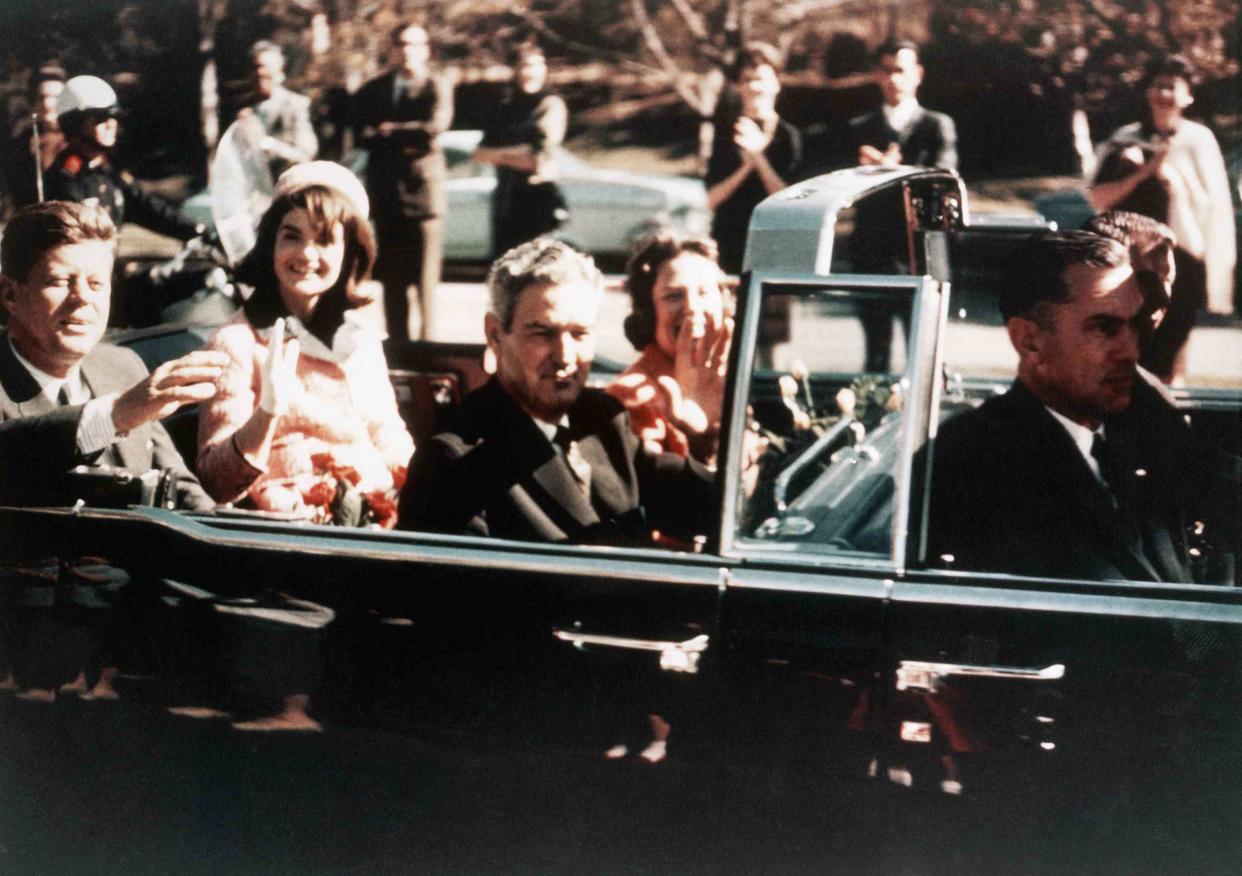
- Oops!Something went wrong.Please try again later.
- Oops!Something went wrong.Please try again later.
- Oops!Something went wrong.Please try again later.
An upcoming book by former Secret Service agent Paul Landis raises questions about the bullets fired in Dallas on Nov. 22, 1963
Sixty years after the assassination of President John F. Kennedy, a former Secret Service agent is offering a startling revelation about that day, claiming that he tampered with evidence and put one of the bullets believed to have killed the president in his pocket before placing it on a hospital gurney.
Paul Landis, now 88, was assigned to the security detail of first lady Jacqueline Kennedy on Nov. 22, 1963, and was traveling with the motorcade when the then-president was struck by two bullets — one in the head and one in the neck — while riding in a parade through downtown Dallas.
"I didn't think about it at all for about 45 years, and at that point it was March 2014 and I started thinking that maybe it was time that I told my story," Landis tells PEOPLE in a new interview ahead of the release of his book, The Final Witness: A Kennedy Secret Service Agent Breaks His Silence After 60 Years.
"That was really the beginning. Up to that point I had no thoughts about writing. Everything was just kind of buried. I didn't think about it. Nobody ever asked me," he says.
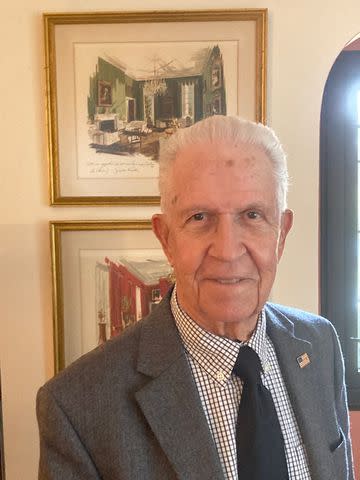
Courtesy of Paul Landis
Paul Landis, former Secret Service agent and author of "The Final Witness"In the book, Landis offers a first-hand account of the moments during, and after, the assassination — and a shocking revelation about a bullet he now says he found that day in the presidential limousine and later placed on Kennedy's hospital gurney.
It's a moment that changed history and a story that still fascinates.
The Kennedy assassination has given rise to endless conspiracy theories in the years that followed— theories that will no doubt be boosted by the revelations made in Landis' new book, which at least one historian says are difficult to believe.
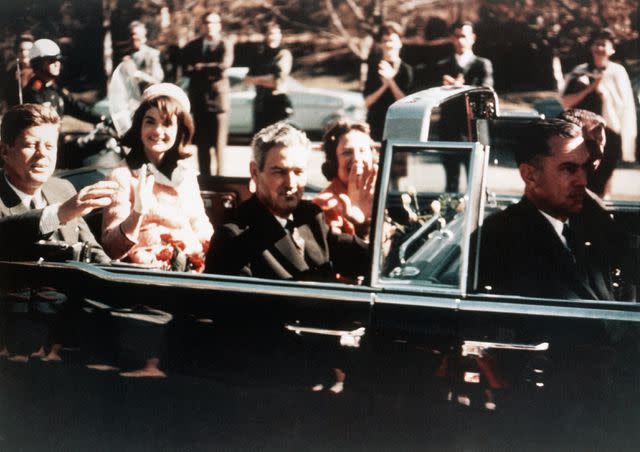
Speaking to PEOPLE in a recent interview, Landis recalls how Kennedy's motorcade had "just completed the hairpin turn in front of the book depository, and the cars were straightening out" when he heard the first shot.
"I recognized it immediately as the sound of a gunshot, turned to look over my right shoulder, and I saw nothing," he says. "I was scanning forward."
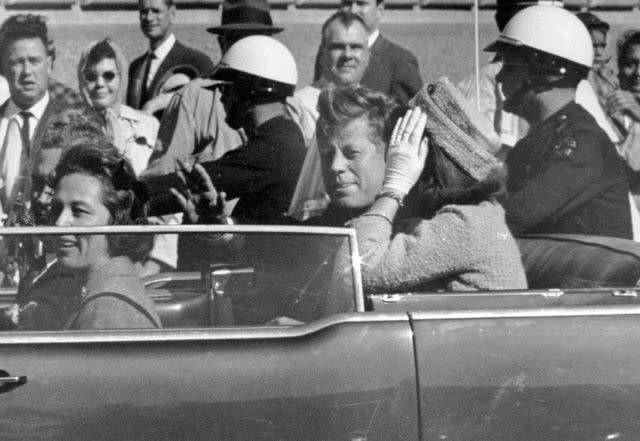
Landis says he saw President Kennedy sitting in the limo and leaning slightly to his left, though it was unclear at that point if he had been hurt. That's when the former agent turned to scan the surrounding areas, including the now-infamous "grassy knoll," long a focus of conspiracy theorists who have claimed that there was a second shooter involved in the attack.
"I had just finished scanning the overpass and ahead of the car, and I heard this second shot, and still no reaction from President Kennedy," Landis recalls. "I couldn't see anything else in the limo. It still appeared that everything was okay."
Then, the third shot rang out. Landis describes how one agent immediately rushed to Kennedy's side before the motorcade raced to Parkland Memorial Hospital.
"It was like a flash of white, and then the air just filled with a cloud of blood and brain, flesh, bone matter — and I ducked so I wouldn't get splattered as we drove through it," he says.
Once at the hospital, Landis says he ran to the president's limo, where Jackie was sitting with her husband's head laid in her lap. As other agents and hospital staff descended on the car, Landis took in the scene.
Blood and bone fragments, he says, were "everywhere," including in a pool on the seat next to the first lady. Landis says he also noticed two bullet fragments in a puddle of blood, picking them up and then placing them back in the seat as the chaos unfolded.
Meanwhile, a fellow agent, Clint Hill, removed his suit coat to wrap the president's head and torso and lift him onto a gurney. The first lady then stood up to follow the group inside.
That's when Landis says he noticed a fully intact bullet "sitting on the back seat ledge, where the cushion meets the metal on the car."
"I picked that up," he says. "I looked at it and I started to put it back. I didn't see anybody in the vicinity, I was wondering where all the agents were. And they all seemed to be over looking for the president or to help remove the president. So I put the bullet in my pocket."
It was "a quick decision," Landis says, one he debated "just for a second," deciding that he ultimately "didn't want that bullet to disappear."
Once inside the hospital, Landis and the others raced down a hallway, landing at a trauma room.
By then, he recalls, "it was just a mad push to get into the trauma room. I was kind of behind Mrs. Kennedy at this point. She was right there holding onto the gurney. I just got pushed in. It was like being trapped."
Landis was in the hospital room, he now says, when doctors and nurses removed Kennedy's body from the gurney, transferring it to an examination table.
"So all the time I've been standing there, I've been kind of fumbling with the bullet in my pocket," he continues. "I took it out and I set it by the president's left foot, and it was like a white cotton blanket on the table, and the bullet started to roll off the table, and I reached out and grabbed it, and there was a little wrinkle in the blanket. So I put the bullet so that it wouldn't roll off. It stopped in that blanket."
Amid the confusion and chaos, Landis says, "I figured this was the place the bullet it needed to be. They would find it. And I felt a great relief that I had saved an important piece of evidence."
In the days and weeks that followed, the shooting took its inevitable mental toll on the agents, including Landis.
"I just kept telling myself, 'Paul, you've got to hang in there. You have to hang in there,'" he says. "I didn't want to be an embarrassment to the Secret Service and in my job."
But he tried not to remember the horror of what he'd witnessed that day.
"We were kept so busy the whole weekend. For me, it became just a blur of activities. We were sleep-deprived, working long hours," he says, noting that he was assigned to the first lady's detail after she moved out of the White House the following week.
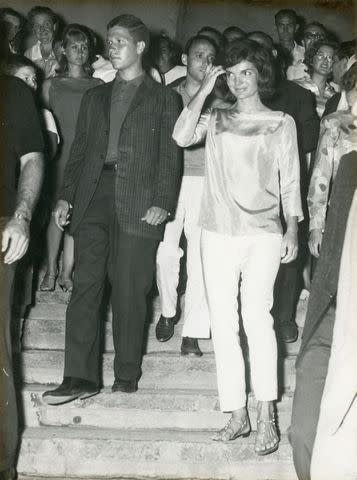
Courtesy of Paul Landis
Paul Landis with Jacqueline KennedyLandis says he did write two reports in the wake of the incident, but that they were brief and he doesn't remember the details. He says he planned to detail the bullet during the larger investigation, known as the Warren Commission.
"I just figured, well, I'm going to be questioned by the Warren Commission and I can tell my whole story then," Landis says. "And that time never came."
It wasn't until 2014, when Landis read the book Six Seconds in Dallas, that he saw mention of a bullet being found on a gurney — though in the book, it's described as being found on the gurney of Texas Gov. John Connally, who was seriously wounded but survived the shooting.
"They showed a picture [of the bullet] in the book, and my reaction was, 'Well, wait a minute. That's the bullet that I put on President Kennedy's stretcher.' And that triggered some thoughts and I wondered what to do. How do I straighten this all out?"
Over the next several years and after conversations with fellow agents, Landis decided to come forward with his story.
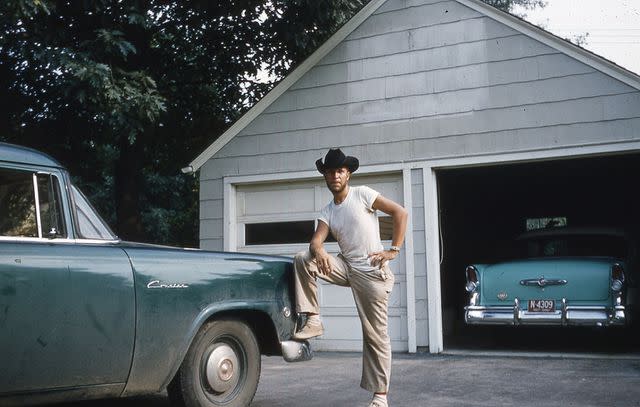
Photo by Paul Kirby, courtesy of Paul Landis
A young Paul LandisSpeaking to PEOPLE 60 years after the assassination, Landis describes the bullet he found that day as having "no sign of really blood on it."
"All I saw were the striations and knew that it had been fired," he says.
Still, he's quick to note that he has no theories about the significance of the bullet or how its existence might change the way some people think about the assassination, which the presidential commission determined was the result of a lone gunman: former U.S. Marine Lee Harvey Oswald, who had positioned himself on the sixth floor of the Texas School Book Depository.
Historian Steve Gillon, who has studied the assassination and wrote a book on the subject, questions the veracity of Landis' account, which he says contradicts the findings of the Warren Commission.
"[Landis'] account and the Warren Commission can't both be right," Gillon says. "So if what he remembers is true, then the Warren Commission is wrong ... It all revolves around the magic bullet. "
According to the Warren Commission, there were three bullets fired. The first one missed its target, and most likely hit a nearby sign, with scattered fragments found nearby.
The second bullet to be fired is the one known as the so-called "magic bullet," and has been determined to have hit Kennedy in the back and exited his his throat before then hitting Gov. Connally, breaking a rib, exiting his body and entering back in his wrist and then thigh.
"According to the Warren Commission, that [magic] bullet was found on a gurney by a hospital employee in the hallway," Gillon notes. "And no one is certain what gurney it was and whether it was the one Connally came in or not. That was the speculation."
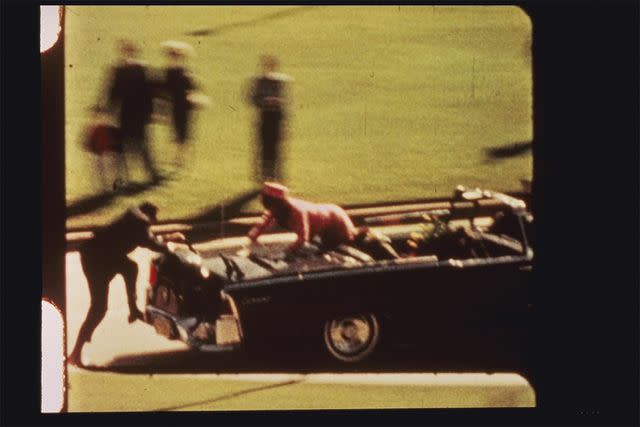
The third bullet is the one that proved fatal to Kennedy, and entered into his head.
That second bullet, Gillon believes, couldn't have been found by Landis on the ledge of Kennedy's limo, behind where the first lady was sitting, as he recounts in his book. "It makes absolutely no sense if it's behind Jackie because how did it get behind her without hitting her?" he questions.
The existence of a bullet — one found behind Jackie Kennedy and pocketed by Landis before being placed on Kennedy's hospital gurney — would also raise another possibility debated in conspiracy circles for decades: the potential of a second shooter.
"If Kennedy and Connally are hit by different bullets, or if there's a mysterious bullet behind Mrs Kennedy as he claims in the book, then it means there has to be another shooter because Oswald was shooting from the sixth floor," Gillon says, "There's just no way of explaining that. The Warren Commission has made very clear what each bullet did."
Related: The Biggest JFK Assassination Conspiracy Theories and How They've Been (Mostly) Debunked
Gillon raises additional questions about Landis' recollections, noting that in Secret Service testimony taken after the assassination, no one placed Landis in the operating room that day, as he now descrbies in his new book.
Gillon adds that, in Landis' own initial statements after the assassination, he never said he went into the operating room.
"Now [in his book], he's in there, and he's in there long enough to take a bullet out of his pocket and put it next to JFK's foot. I mean, there's lots of people in that room. They would've seen him. And then why did he not say this in his statement?" Gillon adds.
As gripping as Landis' account may be, Gillon worries the details may have been lost to time and faded memory: "Historians are always taught to believe contemporaneous accounts over memory, which fades over time. It is difficult to accept that Landis remembers things 60 years later that he did not remember at the time. There are too many contradictions for this account to be credible."
Never miss a story — sign up for PEOPLE's free daily newsletter to stay up-to-date on the best of what PEOPLE has to offer.
Landis, meanwhile, says that his first statements after the assassination were made during a time of great distress — week- and month-long stretches that, while there wasn't a word for it at the time, would now be known as post-traumatic stress disorder.
"I think I became more quiet and reserved. I was fairly outgoing prior to [the assassination]," Landis tells PEOPLE. "I lost my self-confidence for a while there."
Landis left his post six months after the assassination, and now, six decades later, says he feels a weight has been lifted after writing his new book and telling his story.
"It is just a different level of relief for me that I carried this with me for so long," he tells PEOPLE.
For more People news, make sure to sign up for our newsletter!
Read the original article on People.

